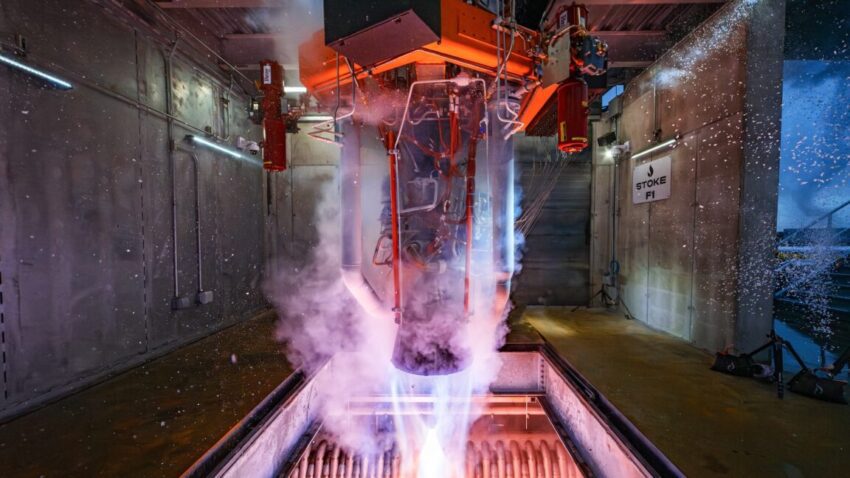
stoke space gives us another reason to Stoke Space has made headlines with its recent announcement of a substantial capital raise, securing $510 million in Series D funding, which significantly bolsters its financial standing and development trajectory.
stoke space gives us another reason to
Overview of the Funding Round
On Wednesday, Stoke Space revealed its latest funding achievement, bringing its total capital raised since its inception in 2020 to an impressive $990 million. This latest round of financing not only underscores the growing investor confidence in the company but also highlights the increasing interest in the space industry as a whole. The Series D funding is particularly crucial for Stoke as it aims to finalize the development of its Nova rocket and prepare for its inaugural flights.
Statements from Leadership
Andy Lapsa, co-founder and CEO of Stoke Space, expressed optimism regarding the funding. In a news release, he stated that this infusion of capital would provide the necessary “runway to complete development” of the Nova rocket. Lapsa’s remarks reflect a broader sentiment within the aerospace sector: that innovative companies can attract significant investment, especially when they present groundbreaking technologies and viable business models.
The Nova Rocket: A Game Changer in Space Launch
The Nova rocket is designed to be a medium-lift vehicle, with an ambitious target launch date set for 2026. Its innovative design aims for full reusability, a feature that could revolutionize the economics of space travel. The rocket is engineered to be fully reusable from the payload fairing down to the engines, which is a significant advancement over many current launch vehicles that only partially reuse components.
Technical Specifications and Innovations
One of the standout features of the Nova rocket is its regeneratively cooled heat shield on the second stage. This technology allows the rocket to withstand the extreme temperatures experienced during re-entry, thereby enhancing its reusability. In fully reusable mode, the Nova rocket is expected to carry a payload capacity of 3 metric tons to low-Earth orbit (LEO). In contrast, when operated in fully expendable mode, it can accommodate up to 7 tons. This flexibility in payload capacity makes the Nova rocket an attractive option for a variety of missions, including satellite deployments and scientific research.
Market Context and Implications
The space launch market has seen a surge in activity over the past few years, driven by advancements in technology and a growing demand for satellite services. Companies like SpaceX, Blue Origin, and Rocket Lab have paved the way for new entrants, and Stoke Space is positioning itself to be a significant player in this competitive landscape. The successful development and launch of the Nova rocket could not only validate Stoke’s business model but also contribute to the broader trend of making space more accessible.
Investor Sentiment and Industry Trends
The $510 million funding round reflects a robust investor sentiment towards the space industry. Venture capitalists and institutional investors are increasingly recognizing the potential for returns in this sector, particularly as the demand for satellite launches and space exploration continues to grow. The funding landscape for space startups has evolved, with many investors willing to back companies that demonstrate innovative approaches to longstanding challenges in the industry.
Stakeholder Reactions
The announcement of the funding round has elicited positive reactions from various stakeholders in the aerospace community. Industry experts and analysts have praised Stoke Space for its ambitious goals and innovative approach. Many view the Nova rocket as a potential disruptor in the medium-lift category, particularly given its focus on reusability and cost-effectiveness.
Challenges Ahead
Despite the optimism surrounding Stoke Space, challenges remain. The aerospace industry is notoriously difficult, with high barriers to entry and significant technical hurdles. Developing a fully reusable rocket involves not only engineering challenges but also rigorous testing and regulatory compliance. The timeline for the Nova rocket’s first flight is ambitious, and any delays could impact investor confidence and future funding opportunities.
Future Outlook
As Stoke Space moves forward with the development of the Nova rocket, the company will need to maintain momentum and focus on its milestones. The successful completion of key tests and the eventual launch will be critical in establishing the company’s reputation in the industry. If the Nova rocket meets its performance targets, it could open doors for additional contracts and partnerships, further solidifying Stoke’s position in the market.
Potential Partnerships and Collaborations
Looking ahead, Stoke Space may explore partnerships with other aerospace companies, governmental agencies, and research institutions. Collaborations could provide additional resources, expertise, and market access, enhancing the company’s capabilities and accelerating its development timeline. The potential for joint missions or shared technology initiatives could also be appealing to stakeholders interested in advancing space exploration.
Conclusion
The recent capital raise by Stoke Space marks a significant milestone in the company’s journey. With $510 million in new funding, Stoke is well-positioned to advance its development of the Nova rocket, a vehicle designed to transform the medium-lift launch market. As the company prepares for its 2026 launch, the aerospace community will be watching closely to see how it navigates the challenges ahead and capitalizes on the opportunities presented by a rapidly evolving industry.
Source: Original report
Was this helpful?
Last Modified: October 9, 2025 at 4:35 am
0 views















